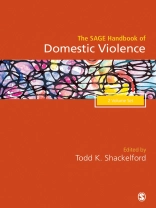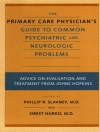The field of Domestic Violence research has expanded considerably in the past decade and now includes work conducted by researchers in many different disciplines, notably political science, public health, law, psychology, sociology, criminology, anthropology, family studies, and medicine. The SAGE Handbook of Domestic Violence provides a rich overview of the most important theoretical and empirical work in the field, organized by relationship type. The handbook addresses three major areas of research on domestic violence:
– Violence against partners
– Violence against children
– Violence against other family members.
This Handbook is a unique and timely publication and a long awaited, valuable resource for the vast amount of Domestic Violence research centres and individual researchers across the globe.
Tabela de Conteúdo
Volume 1
Part 1: Men′s Violence Against Women
Chapter 1: Contesting femicide: Social movements and the politics of men′s violence against female intimate partners – Alison Brysk & Jesilyn Faust
Chapter 2: Public policy and laws addressing men′s violence against female intimate partners – Suzanne Zaccour
Chapter 3: International and Cross-Cultural Research on Men′s Violence against Female Intimate Partners – Lata Satyen, Meu Supol, Archna Ranganathan, & John W. Toumbourou
Chapter 4: Men′s non-lethal physical abuse of female intimate partners – Chunrye Kim & Raquel Kennedy Bergen
Chapter 5: Sexual Violence Perpetrated by Men against Women in Intimate Relationships – Meredith Bagwell-Gray
Chapter 6: Men′s psychological violence against women – Eva Aizpurua & Ciara O′Conell
Chapter 7: Economic abuse and women′s sexual autonomy: Evidence from Ghana – Eric Tenkorang
Chapter 8: Familicide: The killing of spouse and children by men – Marieke Liem
Chapter 9: Homicide-suicide by men against female intimate partners – Sonia Salari & Carrie Sillito
Chapter 10: Domestic Violence and Homelessness Among Women – Helena Menih
Chapter 11: Post-traumatic Growth among Female Survivors and Male Perpetrators of Domestic Violence – Kara Pado & Kanako Taku
Chapter 12: The Role of Masculinity in the Perpetration of Relationship Violence – Michele R. Parkhill & Travis N. Ray
Part 2: Women′s Violence Against Men
Chapter 13: Public policy and laws addressing women′s violence against male intimate partners – Andreia Machado, Marlene Matos, Pedro Jacob Morais, & Mário Monte
Chapter 14: Women′s use of non-lethal violence against men – Elizabeth Bates & Meagan Poynton
Chapter 15: Women′s sexual violence of male intimate partners – Joana Carvalho & Nélio Brazão
Chapter 16: Women′s psychological abuse of male intimate partners – Günnur Karakurt
Chapter 17: Women′s Economic Abuse and Control of Male Intimate Partners – Jozica Johanna Kutin
Chapter 18: Partner-killing of men by female intimate partners – Bitna Kim
Chapter 19: Familicide (killing of spouse and children) by women – Margarita Poteyeva
Chapter 20: Homicide-suicide by Women against Intimate Partners – Wendy C. Regoeczi & Randolph Roth
Part 3: Violence Against Partners in Homosexual Relationships
Chapter 21: The Help-Seeking Process in Same-Sex Intimate Partner Violence – Luca Rollè, Tommaso Trombetta, & Fabrizio Santoniccolo
Chapter 22: Police Perceptions of Victims of Intimate Partner Violence in Same-Sex Relationships – Sofi Oskarsson & Susanne Strand
Chapter 23: Physical abuse and control of intimate partners in LGBTQ+ relationships – Philippa Laskey
Chapter 24: Sexual Abuse of Intimate Partners in Homosexual Relationships – Lisa K. Waldner
Part 4: Mothers′ Violence Against Children
Chapter 25: Infanticide and the Law – Aleksandra Bacewicz & Susan Hatters-Friedman
Chapter 26: Munchausen Syndrome by Proxy: The Maternal Perpetrator and Child Victim – Brittany Abeln, Victoria Towers, & Rene Love
Chapter 27: Mothers who Neglect Their Children – Sandra Azar & Melanie D. Hetzel-Riggin
Chapter 28: Mothers′ non-lethal physical abuse of children – Christina M. Rodriguez
Chapter 29: Child Murder by the Mother – Susan Hatters-Friedman, Alyssa Beda, & Shaina Logemann
Part 5: Father′s Violence Against Children
Chapter 30: Public policy and laws addressing father′s violence against children – Katreena Scott & Nicole Loncar
Chapter 31: Father′s neglect of children – Abdul Khaleque
Chapter 32: Paternal Filicide – The Killing of Children by Fathers – James E. Mc Carroll, Joscelyn E. Fisher, Stephen J. Cozza, & Ronald J. Whalen
Volume 2
Part 6: Other Circumstances of Neglect, Abuse, and Violence Against Children
Chapter 33: Violence against children by stepparents – Agata Debowska, George Hales, & Daniel Boduszek
Chapter 34: Violence Against Children by Mother′s Cohabiting Partner – William Schneider
Chapter 35: Grandparent Violence Against Children – Peggy Keller & Faith Van Meter
Chapter 36: Violence against children by teachers – Finiki Nearchou
Chapter 37: Prevention of Child Sexual Abuse by Non-Parental Caregivers in Swedish Preschools – Anna Westberg-Broström & Helena Bergström
Chapter 38: Religious Practices that Have Contributed to a Culture of Secrecy Regarding Child Sex Abuse in Five Religious Organizations – Marci A. Hamilton
Chapter 39: Violence Against Children by Peers – Claudio Longobardi, Matteo Angelo Fabris, & Laura Badenes-Ribera
Chapter 40: Child Maltreatment in Military Communities – Christin M. Ogle, Ronald J. Whalen, & Stephen J. Cozza
Chapter 41: Violence against children and family polyvictimization – Ko Ling Chan & Qi Qi Chen
Chapter 42: Corporal Punishment in the Ultra-Orthodox Community in Israel: Gaps between the Perceptions of Social Workers and Fathers – Netanel Gemara & Yochay Nadan
Chapter 43: Domestic Violence Against Immigrant Women and Children in the United States – Shreya Bhanderi & Maya Ragavan
Part 7: Violence Against Siblings
Chapter 44: International and cross-cultural research on conflict and violence against siblings – Kirsten L. Buist
Chapter 45: Non-lethal physical abuse of siblings – Inês Carvalho Relva, Madalena Alcarcão, Natalie Harrison, & Otília Monteiro Fernandes
Chapter 46: Sexual Abuse of Siblings – John Caffaro
Chapter 47: The Developmental Impact of Sibling Abuse: Understanding Emotional Implications in the Context of Family Dysfunction – Amy Meyers
Chapter 48: Financial abuse and control of siblings – Roxanne Khan & Gayle Brewer
Chapter 49: Killing of Siblings in Humans – Hans Hämäläinen, Antti O. Tanskanen, & Mirkka Danielsbacka
Chapter 50: Conflict and Violence in Avian Families: A Natural History Perspective – Nicholas D. Antonson & Mark Hauber
Part 8: Violence Against Parents
Chapter 51: International and cross-cultural research on violence against parents – Amanda Holt
Chapter 52: Sexual abuse of parents – Hannah Bows & Simon Hackett
Chapter 53: Psychological Abuse of Parents – Joana Del Hoyo-Bilbao & Ismael Loinaz
Chapter 54: Killing of Parents in Humans – Kathleen M. Heide
Part 9: Violence Against Other Family Members
Chapter 55: Social movements and politics of violence in cohabiting non-marital families – Anna W.M. Choi, Pik Ying Chan, Alhassan Abdullah, Peter T.Y. To, & Barbara C.Y. Lo
Chapter 56: Killing of stepparents by stepchildren – Phillip Shon
Chapter 57: Violence against stepsiblings – Donald Greydanus, Christine Tran Vu, & Julianna Lautenschleger
Chapter 58: Killing of stepsiblings – Jessica A. Hehman, Catherin A. Salmon, & Emily R. Villeneuve
Chapter 59: Violence Against Family Pets – Sara C. Haden, Shelby E. Mc Donald, & Jennifer L. Murphy
Chapter 60: Intimate Partner Violence in Teen Relationships – Sarah Bekaert & Jane Appleton
Chapter 61: Family Violence and Abuse Against Non-Parental Caregivers in Victoria and Tasmania – Ann Mac Rae, Rachel Breman, & David Vicary
Sobre o autor
Todd K. Shackelford received his Ph.D. in evolutionary psychology in 1997 from the University of Texas at Austin. Since 2010, he is Professor and Chair of the Department of Psychology at Oakland University (http://www.oakland.edu/psychology) in Rochester, Michigan, where he is Co-Director of the Evolutionary Psychology Lab (www.Todd KShackelford.com). In 2016, he was appointed Distinguished Professor by the Oakland University Board of Trustees. He led the founding of new Ph.D. and M.S. programs (http://www.oakland.edu/psychology/grad/), which launched in 2012. Shackelford has published around 300 journal articles and his work has been cited over 22, 000 times. Much of Shackelford’s research addresses sexual conflict between men and women, with a special focus on men’s physical, emotional, and sexual violence against their intimate partners. Since 2006, Shackelford has served as editor of the journal Evolutionary Psychology, and in 2014 founded the journal Evolutionary Psychological Science as Editor-in-Chief.












